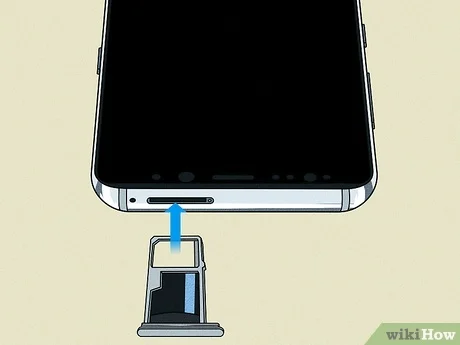How Do I Move Photos to an SD Card on Android?

videos. Whether you’re capturing memories, snapping pictures for work, or just indulging in your photography hobby, the camera on your Android phone is a powerful tool. However, as you accumulate more and more photos, the storage on your device can quickly fill up, which could impact your phone’s performance. This is where an SD (Secure Digital) card comes in handy.
An SD card provides additional storage space for your photos, videos, apps, and other files, helping to prevent your device from running out of space. Moving photos to an SD card on an Android phone can free up internal storage and ensure that your phone continues to run smoothly. This article will guide you through the steps to move photos to an SD card on your Android device, explain how to manage your storage effectively, and discuss how you can optimize your photo management for future use.
What Is an SD Card and Why Do You Need One?
An SD card is a small, portable memory card that can be used to store digital data such as photos, videos, documents, and apps. Many Android phones come with a slot for an SD card, which allows you to expand the phone’s storage beyond its internal capacity. This makes it easier to store large media files, such as high-resolution photos and videos, without worrying about running out of space.
There are different types of SD cards, including microSD, miniSD, and standard SD cards. Most Android phones today use microSD cards due to their compact size. Before you start moving photos, it’s important to ensure your Android phone supports an SD card and that you have a microSD card inserted into your device.
Steps to Move Photos to SD Card on Android
Moving photos to an SD card on Android is a relatively simple process, but the exact steps may vary slightly depending on your phone’s manufacturer and Android version. Here’s a general guide you can follow:
Step 1: Insert the SD Card into Your Android Phone
Before you can move any photos to the SD card, you’ll need to insert the SD card into your Android device. Here’s how you can do that:
- Power off your phone: It’s a good practice to power off your phone before inserting or removing an SD card.
- Locate the SD card slot: Depending on your phone model, the SD card slot may be located on the side of the phone, under the battery, or in a separate tray (usually near the SIM card tray).
- Insert the SD card: Slide the SD card into the slot with the gold pins facing down. Make sure the card is properly inserted.
- Power on your phone: Once the SD card is securely in place, power on your phone.
Your phone should automatically detect the SD card once it’s powered on, and you may see a notification indicating that the card is ready for use. If this doesn’t happen, you might need to format the card before using it. You can do this by going to Settings > Storage > SD Card and following the prompts to format the card.
Step 2: Open the File Manager App
To move your photos, you’ll need to use the file manager on your phone. Most Android phones come with a pre-installed file manager app, such as Files by Google, Samsung My Files, or File Explorer. If you don’t have one, you can download a third-party file manager app from the Google Play Store.
- Open the File Manager: Find and open the file manager app on your phone.
- Navigate to Your Photos: In the file manager app, locate the folder containing your photos. This folder is usually named DCIM (Digital Camera Images), but it may also be in other folders like Pictures or Gallery.
Step 3: Select Photos to Move
Now that you have accessed the folder with your photos, you can begin selecting the ones you want to move to the SD card.
- Select the photos: Tap and hold one of the photos you want to move. This should activate the selection mode. You can then select multiple photos by tapping on them. Most file managers allow you to select multiple files by tapping the checkbox next to each photo.
- Select all photos (optional): If you want to move all of the photos in the folder, you can usually find an option at the top of the screen that says Select All.
Step 4: Move Photos to the SD Card
Once you’ve selected the photos, it’s time to move them to your SD card.
- Choose the Move Option: Look for the option to Move or Copy. This may be represented by an icon (such as scissors for move or two files for copy). Tap this option to begin the transfer process.
- Navigate to the SD Card: After selecting the move option, your phone will ask where you want to move the files. Select SD Card as the destination.
- Choose a Folder: You can either create a new folder on your SD card for the photos or choose an existing one. If you want to organize your photos further, creating a dedicated folder for them on the SD card is a good idea.
- Move the Photos: Once you’ve selected the destination folder, tap Move Here or OK. The photos will be transferred to the SD card.
Step 5: Verify the Photos Are Moved
After the transfer is complete, you’ll want to check that the photos have been successfully moved to your SD card.
- Open the File Manager: Go back to your file manager and navigate to the SD card section.
- Check the Folder: Open the folder where you moved the photos to ensure they are there.
- Open Photos: You can also open your Gallery or Photos app to see if the photos appear there. Depending on your phone, the photos may still show up in your gallery, but now they are stored on the SD card instead of internal storage.
Setting SD Card as the Default Storage for Photos
If you want all your future photos to be automatically saved to the SD card, you can change your camera settings to make the SD card the default storage location. Here’s how you can do it:
- Open the Camera App: Launch the camera app on your phone.
- Go to Settings: Tap the settings icon (usually represented by a gear icon) within the camera app.
- Select Storage: Look for the Storage option or Save location setting. This might be under the General Settings or Advanced Settings depending on your phone.
- Select SD Card: Choose SD Card as the preferred storage location for photos and videos.
Managing Your SD Card Storage
As you move more photos and files to your SD card, it’s important to keep an eye on how much space is available. To avoid running out of storage on the SD card, consider the following:
- Regularly Check Available Storage: Go to Settings > Storage to monitor how much space is available on your SD card. If it’s getting full, consider transferring old photos or files to a computer or cloud storage service.
- Organize Your Photos: Create folders within the SD card to organize your photos by date, event, or category. This will make it easier to locate specific photos later.
- Use Cloud Storage: If you need additional storage space beyond the SD card, consider using cloud storage services like Google Photos, Dropbox, or OneDrive. Many of these services offer free or affordable plans for photo backup and management.
Troubleshooting Common Issues
While moving photos to an SD card is usually straightforward, you may encounter some issues along the way. Here are some common problems and solutions:
- The SD Card Is Not Recognized: If your phone doesn’t recognize the SD card, try reinserting it, or try using a different card if possible. Ensure that the card is formatted correctly for use with your phone.
- SD Card Is Full: If your SD card is full, you’ll need to free up space by moving or deleting files. Try transferring some files to a computer or using cloud storage to back up your photos.
- Photos Are Missing or Not Displaying: If your photos aren’t showing up after being moved, try restarting your phone or refreshing your gallery app. You may also want to check if the SD card is properly formatted and mounted.
Conclusion
Moving photos to an SD card on Android is a practical solution for freeing up internal storage, organizing your files, and improving the overall performance of your device. By following the steps outlined in this article, you can easily transfer your photos to an SD card and ensure they are safely stored. Additionally, setting your SD card as the default storage location for photos and videos will help keep your device’s storage from filling up too quickly.





